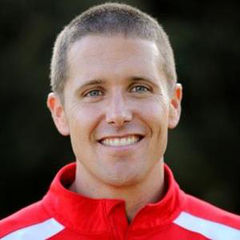The popularity of fitness boot camps has swept the globe. Participants enjoy the diverse challenges and electrifying energy of a grueling workout while surrounded by fellow “sufferers.” Large groups of clients paying to train together offers you, as a health and fitness professional, an opportunity to maximize your income in minimal time.
The nature of the boot-camp experience is often a departure from more orthodox methods of program design. Participants show up every day, every week, every month looking for a new, unique and engaging challenge. As any health and fitness professional knows, however, before these excited masses flip a tire, battle a rope, or drag a sled, a proper warm-up is in order.
The warm-up portion of any workout should be comprised of physiological and biomechanical strategies to prepare the body to move in combination with psychological engagement strategies to set the emotional tone for the experience. This is true whether you’re working with casual fitness-camp participants or world-class athletes.
For boot campers, the experience they desire is camaraderie, physical challenge and fun. The warm-up is the time to set the physiological and psychological tone for this experience.
In my 20 years of training groups small and large, I’ve discovered three simple ways to make boot-camp warm-ups not only effective and efficient, but also fun. I’ve put these concepts into a framework of connection, adaptation and imagination.
Connection
To have a cohesive group experience during a boot camp, all participants should feel connected and engaged. The worst-case scenario during a group experience is for anyone to feel alienated or alone in any way. As adults, we tend to be socially guarded and cautious, so breaking down these barriers is a key ingredient to creating a connected and engaged group.
Beginning a boot camp with activities that require cooperation, touch and communication can immediately create a connected, engaged group of participants. These can be brief and don’t even require elevating the heart rate significantly. Below is an example of a partner connection game that takes about two minutes.
- Have participants find a partner.
- Partners must stand as close to “toe to toe” as possible and must maintain eye contact.
- Partners count to three, alternating each number. For example, partner one says “one,” partner two says “two,” partner one says “three” and so on. They continue this for about 10-20 seconds.
- Next, instead of saying “one,” the first partner to count claps his or her hands. Partner 1 claps, partner two says “two” and then partner one says “three.” The sequence would sound like Clap, Two, Three. This continues for 10-20 seconds.
- Next, instead of saying “two,” the second partner to count stomps his or her foot. The alternating sequence would then be Clap, Stomp, Three. This continues for 10-20 seconds.
- Finally, no actual numbers are used in the counting sequence. Instead of saying “three” the counting partner shakes his or her hips side-to-side. The “One, Two, Three” alternating sequence becomes Clap, Stomp, Hip Shake. This continues for 10-20 seconds.
- Quickly have the partners return to verbally counting to three together.
The initial simple task of counting to three is relatively difficult. After “playing” a bit with silly antics, it becomes much easier the second time around. It’s worth highlighting this to the group. Our communication improves when we’re willing to let down our individual barriers.
Adaptation
The term “dynamic warm-up” is often used to describe activities that prepare the specific muscles, planes of motion and neuromuscular sequencing that will be utilized during a workout. However, when the same activities are used day after day, week after week, month after month, the brain and body become so accustomed to these movements, the coordinative demand decreases. In other words, the brain gets lazy.
Instead of dreaming up new and progressively more extreme movements to engage the brain, simple variables can be added to a handful of warm-up staples to keep the nervous system alive and active.
Consider taking any locomotion or callisthenic movement and applying a variable for effort (fast, slow, hard, soft, etc.), space (direction/path of movement, limb orientation, high/low, etc.) or relationships with objects or partners (under, over, around, mirroring, etc.).
For example: Skip fast (effort) with your arms wide (space) in a zigzag path (space). Shuffle with a soft force (effort) in a curved path (space) while mirroring a partner (relationships).
This opens endless opportunities to not only create neuromuscular challenges to prepare the body to work, but to have fun while doing it.
Imagination
When we’re young, we see the world through imaginative eyes. We can hop from one piece of furniture to another to avoid the “lava” on the floor. We fly through the air like a bird, without leaving the ground. The world is a pretty amazing place with this type of imagination.
The ability to perceive our environment in different ways increases our capacity to think, connect and innovate as we age. Unfortunately, this type of imagination is often stifled as we emerge from childhood. It’s amazing to see what adults will do when given the “permission” to use their imagination.
To use this strategy during a warm-up, consider everything in the workout environment, including the ground, air, sky, walls, cones, etc. How could these elements temporarily be transformed with a little imagination to create a physical challenge? You could say, for example, “Karaoke across the ground that is made out of Jell-O. Now it’s ice. Now skip and the air around us is helium.”
Another option here is to use abstract action words in combination to create a movement sequence. For example, “Scamper, explode, roll to the cone.” Participants use their imagination to first create a movement for each one of the action words, then sequence them together repeatedly until the end goal is reached.
These three simple strategies provide an easy-to-follow framework to make boot-camp warm-ups safe, effective and fun. Try them with your boot campers today to get them excited to be fit for life.
With a group fitness instructor certification, you have the ability to get the most people moving, every day, and to make a tremendous impact on the health and well-being of your community. Find out more about ACE’s Group Fitness Instructor Certification.




 by
by 




 by
by